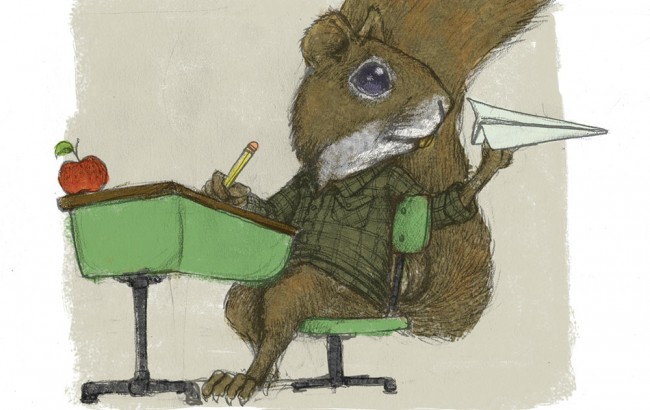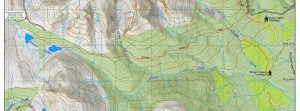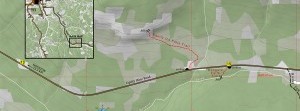
Photo Credit: Facundo Gastiazoro
Squirrels: The Kids of the Back Yard
“God, the kids were squirrely in my class today!” My colleague shifted grumpily in his staffroom seat while sipping from a cup of stale coffee. It was one of those impromptu after-school gatherings when some of us teachers would bump into one another and perform a post-mortem on the academic day.
Squirrely, I pondered—interesting term. I wonder what he means, precisely? It was obvious that the kids had been noisy, restive, and semi-cooperative. But how did that specifically relate to squirrels?
Since retiring from the classroom in BC’s fractured but still-functioning school system, I’ve had occasion to learn a lot about squirrels. I’ve discovered that my wife and I are backyard landlords to one or more of the little beasts, and we have come to enjoy their presence as a fine entertainment alternative to the allure of the Internet or the arid wasteland of television.
Here in BC’s Northwest we find red squirrels (tamiasciurus hudsonicus, or “shade tale”). Members of the rodent family, these squirrels are territorial, and they loudly announce a claim to their territories with their energetic chattering. A female, who may mate with numerous males, might produce one or two litters of three or four offspring per year, although some years she may produce none. As the young squirrels mature, it is not uncommon for a mother squirrel to ‘bequeath’ her territory to one of her young and to move on herself. The other young have to find a new territory in which to establish themselves.
Forested areas are squirrels’ natural habitat, but they don’t seem to mind human presence, as they are often found near buildings and homes in town. They make leaf nests in the crotches of trees or in a convenient ground hollow. One squirrel usually has several nests within her territory, and along with her young may move frequently among them.
Our backyard features a variety of trees that make fine habitat for red squirrels. A 70-foot cedar graces the west side of the yard. Nearby and to the rear stand a half-dozen tall birches whose interwoven branches create a network of useful pathways. Along the fences bordering the yard are lower-growing species including wild rose, alder and maple. This abundance provides litter for nest construction and plenty of food—especially since we feed the squirrels along with the birds.
The seeds of conifers are the natural staple of red squirrels’ diet. Aside from these, squirrels have been known to eat spruce needles, mushrooms, willow leaves, berries, dandelion leaves, and even small birds’ eggs. We have discovered they also have acquired a taste for black sunflower seeds and peanuts, which they collect, store and hide with great industry.
“Look at that little guy go!” my brother remarked as we enjoyed a glass of sauvignon blanc on the patio last summer. Acro (short for ‘acrobat’ and our name for the latest of our squirrel tenants) was bounding away down our fence ‘highway’ from the bird feeders toward the cedar, a peanut locked in its jaws. “He’s been tearing back and forth all afternoon!”
“Girl, probably,” I murmured, “according to Wikipedia.”
We watched, fascinated, as Acro emerged from the cedar about 20 feet up, scampered along a birch branch, then scrabbled up its trunk to a crotch obscured by a patch of leaves. Only moments later she reappeared, reversing her route, racing along the branch, down through the darkness of the cedar and back toward us along the fence to the cherry tree, where bird feeders hang enticingly near our deck. Here she hung upside-down and began tugging some suet from a container we had set out for flickers and woodpeckers. I tried to imagine eating upside-down, or leaping a distance three times my height with a nut the size of my head in my teeth, and then doing it again and again.
The amount of energy these small animals expend compared to their body mass is extraordinary. Mornings I wake up to its repeated cry of “CHIT, CHIT, CHIT, CHIT!!!” Where’s the cat, I wonder. Watching Acro’s furry form make this noise, I see that the whole body goes into it. The back jerks, plumy tail quivering above, and one can imagine her little diaphragm snapping like mad to pump out the racket. The noise carries halfway across the park.
Squirrels have a penetrating stare, as if behind the big dark eyes they’re processing like mad to assess any threat that might exist in those big, lumpy beings that emit incomprehensible sounds and bring them peanuts. Some days Acro will approach within a few feet, seeming to ignore us altogether. Other times when we approach she’ll scramble up to some high branch and eye us suspiciously, or even rocket away down the fence on some task that seems to have suddenly dominated her attention.
Of course, our squirrels have to share the backyard with many other species, both wild and domestic (there are several neighborhood cats, for instance, that creep about stealthily and gaze longingly at our bird feeders), and such sharing does not come particularly naturally. Steller’s jays are clever competitors for any nuts set out for the squirrel. One jay will systematically lure her away (Acro will chase it up and down the tree, along the fence, and even out into the yard). Meanwhile, the other jays will be pillaging the peanuts.
Crows, also very smart, watch Acro taking nuts up into the crotch of a tree where she has made a stash. While she is down in the yard somewhere one or two crows will flap up to the stash, remove some nuts and fly up to the rooftop to crack them open, a height Acro has no way of reaching.
Once a sharp-shinned hawk coasted into the yard and perched imperiously on the fence between the cherry tree (where Acro was collecting a peanut) and the great cedar where we think she has a nest. The smaller birds (siskins, juncos, chickadees etc) promptly disappeared. I could imagine their little hearts beating in natural terror.
Having selected a nut, Acro went bounding down the fence toward the hawk, then stopped in abrupt surprise about two feet away from it. We thought she’d be fresh hawk lunch, but the hawk seemed not to notice her. Quickly, Acro slipped down the side of the fence to a lower rail and raced behind and beneath the hawk to her usual destination. Finally the oblivious hawk lifted its magnificent wings, pulled itself into the air and sailed off. Within minutes the flurry of bird-feeder activity resumed.
These wild beings are not exactly pets, yet they fill that kind of role in our daily lives. We care for them in a distant way, and they return our investment by performing their instinctual behaviors in an ongoing natural drama that often borders on comedy.
Squirrels, like children, are noisy and energetic, full of serious fun, and often unpredictable. They squabble and compete and are strongly motivated by food. My colleague’s choice of “squirrely” to describe his restless, unpredictable students was truly apt. Any squirrels in your family?
Illustration Facundo Gastiazoro




